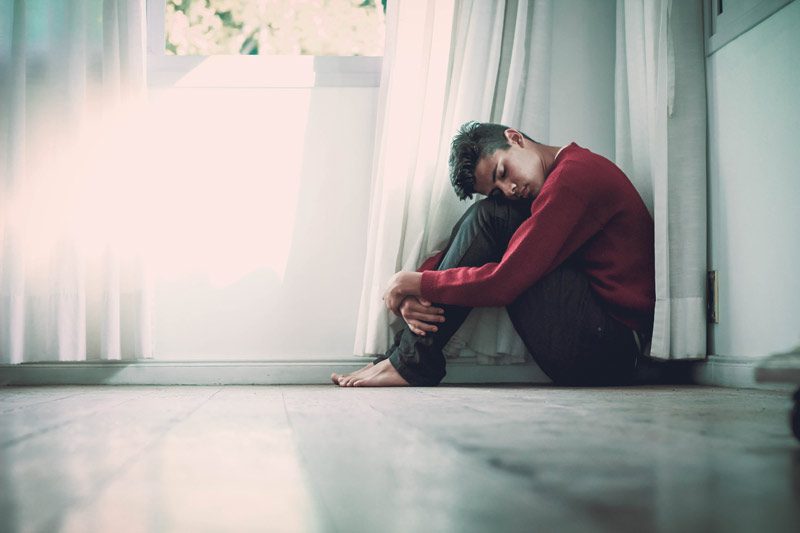As human beings, we all feel sad at times. Sadness is a natural emotion that everyone experiences. It occurs at different levels, and people often confuse extreme sadness with depression.
Here is a detailed guide to help you know the difference between sadness and depression, so you can treat your depression or cope with sadness or that of a loved one.
Differences between Sadness and Depression
1. Emotion versus Mental Health Disorder:
Sadness is a human emotion. It is healthy to feel sad when you go through certain events that may be upsetting, such as experiencing the death of a loved one, losing a job, or facing a breakup. Being sad helps you process those negative emotions and makes you feel better over time.
Depression, on the other hand, is a mental illness and unhealthy. If someone displays signs of depression for at least two weeks, that person likely has a depressive disorder. Symptoms of depression include specific changes in a person’s behavior, emotions, and even experiences.
2. Longevity:
As sadness is an emotion, it tends to fade over time. Sadness, even when felt in extreme, dims with time. When you experience a period of sadness, you can still have moments of joy, laughter, and calmness.
Depression is a longer-lasting state; if left untreated and unattended, it can persist for longer periods. You feel empty almost all day, most of the days; the symptoms are constant but can get worse at times.
3. State of Mind:
Sadness is usually a reaction to unpleasant experiences or painful events that cause distress.
Depression may not have a specific cause. You may feel depressed without even thinking of an event or experience, and you have a negative view of your life and events most of the time. If depression starts after a distressing event has occurred, that event might be the trigger of your depression rather than the sole cause.
It is sometimes difficult to differentiate between sadness and depression as the signs seem similar. For example, divorce or the breakup of a long relationship can be overwhelming and may cause some people to be extremely sad and even change their eating and sleeping habits. In such situations, patterns or changes in mood and behavior, should be noted.
Grief or sadness can be more intense at first but diminish with time. In contrast, depression does not go away with time; if left untreated, it can even worsen. Sad people often want and appreciate the support and effort others make to help them. However, people with depression may isolate themselves from others and experience strong feelings of guilt and lowered self-esteem.
4. Hurdles in Daily Life:
While grieving, you might find yourself returning to sad thoughts even if you try to avoid them. But, this doesn’t affect your daily life. You can go about your usual routines even if you feel low. That’s not the case with depression. When you’re depressed, your daily routine is hindered. You may find it hard to get out of bed or do minor daily tasks. People around you may notice changes in your behavior, and you may find it difficult to fall asleep or enjoy the little things that used to give you pleasure.
Symptoms of Depression
Sadness may also turn into depression, so you need to be careful not to let that happen. Below are some symptoms of depression:
- Persistent sadness or anxiousness
- Constant fatigue
- Hopelessness
- Lower self-esteem and feelings of guilt
- Not feeling pleasure from activities you once enjoyed
- Headaches or body aches without any reason
- Loss of appetite or eating too much
- Difficulty sleeping or sleeping too much
- Difficulty concentrating
- Suicidal thoughts or actions
The more you notice these symptoms, the better it is to seek professional help and not just hide it.
Diagnosis
Depression is diagnosed by various methods. Your doctor may ask you questions about your condition or may give you a questionnaire to better understand your feelings and symptoms. Your doctor may also ask you about your family life, work, any trauma you’ve experienced, or things that bother you.
The doctor should know your complete medical history and the medications you are taking to rule out other causes of your symptoms.
Triggers or Causes
Depression can affect women and men of all ages and ethnic groups. Certain risk factors may trigger a depressive episode or make it worse.
Common risk factors for depression are:
- Childhood or teenage trauma
- Family history
- Chronic illnesses
- Lack of acceptance from friends and family
- Inability to cope with stressful life events
- Guilt or poor self-esteem
Treatment for Depression
Depending upon the severity, depression can be treated with medications, psychotherapy, or a combination of both. There are several anti-depressants, and your doctor can recommend the best one for you.
Psychotherapy is a common treatment option these days as it helps you think about your emotions and replace your negative thoughts and feelings with positive ones. It also teaches you how to reflect and feel better about yourself.
Lifestyle changes can also help with this condition. Measures such as getting enough quality sleep, eating a healthy and balanced diet, exercising or taking a walk, and spending time with your loved ones can contribute to improvement.
How to Cope With Sadness
Here is how you can cope with sadness in the best possible manner:
- Don’t deny your feelings or emotions of sorrow; allow yourself to feel sad, so your mind processes those emotions and they don’t turn harmful in the future. You should also cry if you feel like it, as crying makes most people feel better.
- Call trusted friends or family members and vent. Tell them how you feel and why.
- Spend time doing things that you enjoy. It can be spending time with your pet or doing something expressive, like painting or dancing.
- Take some time to go out and take a walk.
- Try meditation and self-care rituals
- Think and write about your feelings. This will help you organize your thoughts.
- Take some time to be alone and notice your emotions and thoughts.
The Takeaway
Sadness is a human emotion that may have a specific trigger, whereas depression is a mental health disorder that may not have a particular reason. Coping with either sadness or depression isn’t easy, and you should always take care of yourself during the process. If either of these conditions persists over time, it is best to seek help from a psychotherapist or other mental health professional.
If you or someone you know experiences mental health issues, it is important to seek help from a qualified professional. Our Resource Specialist can help you find expert mental health resources to recover in your community. Contact us now for more information on this free service to our users.
About the Author: Sadia Iqbal is a freelance content writer. She graduated in Communication Studies. She specializes in writing about health and beauty-related topics and aims to provide readers with the best and most authentic information.
July is BIPOC Mental Health Month
Observed each July and formerly recognized as National Minority Mental Health Awareness Month, BIPOC Mental Health Month highlights the unique mental health challenges and needs of Black, Indigenous, and other People of Color (BIPOC). Please join us in recognizing the struggles of BIPOC and bringing awareness to the need for adequate, accessible, culturally relevant mental health treatment, care, and services.
www.rtor.org and its sponsor Laurel House are committed to the advancement of racial equity and social justice and to making mental health services available to all.
Photo by Fernando @cferdophotography on Unsplash
The opinions and views expressed in any guest blog post do not necessarily reflect those of www.rtor.org or its sponsor, Laurel House, Inc. The author and www.rtor.org have no affiliations with any products or services mentioned in the article or linked to therein. Guest Authors may have affiliations to products mentioned or linked to in their author bios.
Recommended for You
- The Truth about Relapse in Addiction Recovery - April 14, 2025
- The Power of Peer Support in Mental Health Recovery - April 10, 2025
- Artificial Intelligence in Anxiety Management: How AI Helps Users Cope with Anxiety Symptoms - April 3, 2025





